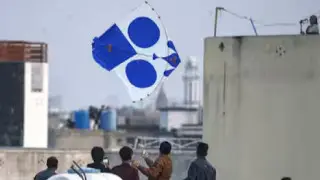
Houthi fighters (Social Media)
International News: When discussing conflict in the Middle East, the usual names that come to mind are Israel, Iran, and the United States. But in recent years, Yemen’s Houthi rebels have disrupted this equation by creating massive turmoil in the Red Sea, a critical global trade route. Their operations have not only challenged military giants but also exposed a new reality: non-state actors are now shaping the region's power dynamics—and the Houthis are leading the charge.
So, are the Houthis really just a rebel faction anymore? Here are five strong reasons that prove they are now a key geopolitical player in the Middle East:
Since October 2023, Houthi forces have launched attacks on more than 130 ships in the Red Sea. Of these, 44 ships were damaged, and two were completely sunk. The most recent target was the Greek-owned MV Magic Seas, which came under attack twice and was set ablaze. Remarkably, all 22 crew members managed to survive.
These aren’t random acts of violence—they represent a coordinated maritime disruption with strategic intent.
In March 2025, the U.S., frustrated by continuous Houthi aggression, launched a full-scale air offensive. Advanced F-35 fighter jets were deployed, and billions of dollars' worth of munitions were expended. Yet, the outcome was underwhelming. While attacks briefly subsided in May, the Houthis resumed operations by June, prompting the U.S. to soften its approach and move toward negotiation.
Israel targeted key Houthi-held areas, including Hudaydah, Ras Issa, and Salif ports. Yet, intelligence reports confirm that no top Houthi commanders were killed. This indicates a significant advancement in the Houthis’ defensive tactics and intelligence infrastructure, enabling them to not only launch attacks but also evade highly coordinated counter-strikes.
Following U.S. bombardments, analysts believed the Houthis’ missile stockpiles were depleted. However, the group has continued its assault using drones and Uncrewed Surface Vehicles (USVs). This resilience points to a technological transformation—the Houthis are reportedly developing indigenous missile and drone systems, some of which may even be reaching foreign markets.
Despite relentless international pressure, the Houthis maintain a strong grip over large parts of Yemen, including the capital Sanaa and coastal regions. Their military and administrative networks remain intact and active. Reports now suggest that Iran is considering integrating the Houthis more deeply into its regional strategy, which has rattled both the U.S. and Israel.
While global powers like the United States and Israel face mounting challenges, the Houthis are quietly expanding their influence—militarily, technologically, and geopolitically. They’ve gone far beyond their initial identity as a local rebel group.
The new power lines in the Middle East are no longer being drawn solely in Tel Aviv, Tehran, or Washington—they're also taking shape in Sanaa.













Copyright © 2025 Top Indian News
